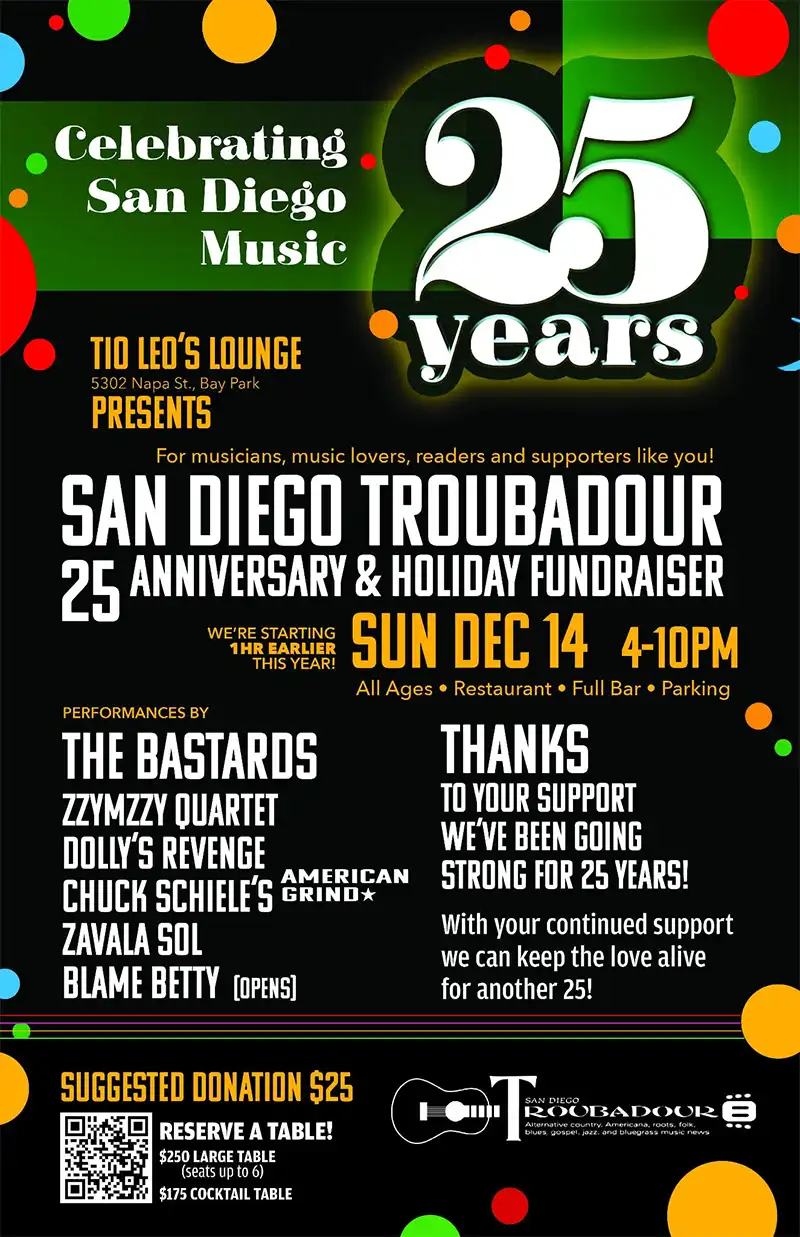Smoke Signals
Recording Matters Part 9: Mixing
Hi! My name is Jeff Berkley. I’m from San Diego California. I am a musician, songwriter, engineer, and producer. I spend four or five days a week, at Satellite Studio, producing records. I’ve made lots and lots of them. I’m very lucky to be able to find magic in all sorts of different types of musical situations, levels, styles & vibes. Somehow, I can focus on what’s authentic and draw it out. I have no idea how I got here but, I sure did luck out!
This is part nine of my attempt to articulate my own recording method to you. As I’ve said before, it’s just my method. It works for me. It seems to work for others as well.
So far, we’ve chosen, written, or co-written, edited and “memo demo’d” the songs. We’ve chosen a producer and a studio. We’ve talked about choosing and preparing the musicians, recording basic tracks, and editing them, the instrument overdub process, recording and editing lead vocals, backing vocals, horns and strings! This month we will talk about the final mix!
Some might tell you that mixing is the most important step in the recording process. I don’t know if I have an argument for that, but sometimes it isn’t the most important all by itself. There’s an aggregate of importance when it comes to the steps of recording. A successful final mix is always due to success of all the other steps of the recording process. The final mix is just that, a final mix.
Until now you’ve been doing rough mixes on the project either for yourself or for clients. These, of course, are important because you want everybody to be excited about the recording. There’s always this balance of making it sound cool without spending too many hours doing rough mixes.
There’s another aspect of rough mixes that’s important. I don’t think you want folks to get too attached to the rough mixes and then not like the final mix somehow. Very often we tend to put all sorts of compression and limiting on the rough mixes to make them loud and proud! Like I said, we want the client or ourselves to be excited! As I’ve done this throughout the years, I found that it serves us all better to have the rough mixes sound cool but not completely finished. This way, the finished product is really exciting to hear!
So, while the final mix is a very important step, it’s just as important to record all the ingredients of the final mix well and with all sorts of vibe! No matter what anyone thinks, there is no piece of gear or plug-in that creates vibe. It can only enhance what the human has done.
I always like to start my mixes by completely pulling away everything I’ve added to rough mixes up until then. Any plug-ins or inserts should go away at this point. Starting with a completely clean slate is great because it keeps us from letting our preconceived notions get in the way.
By now, we’ve got all sorts of ideas for the mix but until we sit down and try them, we don’t really know if they’ll work or not. I enter into mixes with ideas and a vibe I’m shooting for, but I try and keep my mind open to whatever I learned about the tracks once I solo them all out.
If you’re recording your own record, most of the stylistic choices have been made. I guess that goes for if you’re recording the client as well. We all kind of go in knowing who the artist is and what they do. That’s not to say that there aren’t some artists who haven’t really figured that out yet, and it’s our job to help them find who they are. Those are very difficult projects, but we all do them and they’re very rewarding.
A mix is a painting. We start with a blank canvas, add colors, and try and balance them in a dynamic way that enhances the song, frames the vocal, and moves the listener.
All of that must be done within the parameters of available overall volume, dynamic range, and frequency range. In other words, if you make the mix too loud, too bassy, or too bright, it will sound weird compared to the other things people listen to. If someone is shuffling through their music, you want your song to hold up to the songs before it and after it. That just means they should be close to the same volume without ruining the dynamics of the song.
Limiting, compression, and equalization can all kill dynamics. If you push on something too hard with compression, then you’re pushing against the louder portions of that performance. Our job as mixing engineers is to decide how much of that energy should be controlled and how much should be left to blossom!
This is also where style and color come in. There are all sorts of different compressors, EQs, and limiters. There are so many different, dynamic plug-ins that can really help color the mix element or the whole mix. Let me explain.
I always start with drums. I solo out the kick drum and make it sound like I want to. Hopefully, I’ve recorded it pretty close to that but sometimes we need to carve up the low a tiny bit so it’s not too big or too small, sometimes we need to add definition in the mid-range, or even in the highs, on a kick drum. All of those decisions need to be made throughout all of the drums. Be careful not to over compress the individual drums because you’re going to compress them all together as well.
This is where I will go into the tom tracks and carve out anything that isn’t a tom hit. In the old days we used to use gates to do this. The gate would only let a certain level of DB get through, depending on the threshold that you set. Now, I just erase anything that isn’t a tom hit and then put fades around the tom hits to make them sustain as long as I want them to.
I go through each individual drum track!
Once I’ve got all the drum elements sounding like I want them to, I’ll set up a stereo, bus and bus all of the drums through that stereo bus. This allows me to think of all of the drums as one element and compress or EQ or treat all of the drums as one thing. Generally, I’ll put some kind of cool compressor on the drum bus as well as EQ. Sometimes I use tape saturation on the drums because tape compression sounds cooler to me than most compressors.
Getting into the minutiae of each individual drum track is too much for this column, but all of that comes from trial and error and just finding things that work for you. The drums should be controlled, but not feel controlled. There should be dynamics and energy when the kick and snare are struck. The toms as well for that matter. If you don’t have room mics, use room modelers or different reverbs that can add some width and depth, or even some distance. Maybe you want the drums to be mono, which can be a really effective tool for finding space in a mix. All sorts of music have used mono drums over the years. Listen to some Beatles records where the drums are completely panned to one side or the other. All sorts of funk records have near mono drums, and they’re completely punchy and wonderful!
Once the drum kit, percussion kit, djembe, cajon, or whatever the main drum part consists of is done, I will work on any auxiliary percussion for the track. Sometimes those are stereo. Sometimes they are mono and panned round to different places. It just depends on what it is and how much of it you have to work into the mix.
These are all stylistic choices and will come from you knowing the genre of music you’re recording or producing and knowing the artist. A good mixing engineer can include all of these things in the final mix.
Anyway, once the drums are done, I move onto the bass guitar. Maybe it’s upright bass. Maybe it’s synthesizer bass or whatever the instrument it is that holds down the low frequencies. At this point, I usually re-amp the bass guitar, because, for the most part, we track bass guitar directly. It’s rare that we have isolation for a bass amp, so it’s easy to add it later. Usually in the re-amping process, I will add some mids to the bass to give it some definition. A lot of bass players really like a big booming sound and that’s cool to me as well. However, a lot of folks don’t know that you need plenty of upper mids and even some highs for the bass to sit in the mix correctly. The amp can add a lot of this, but a little bit of EQ to carve it into the track is probably cool too.
Once all the percussion and bass is done, I move onto the rhythm instruments like guitars, keyboards, and even banjos and mandolins. All sorts of instruments can make up the rhythm section and I like to do those next, because they’re so closely related to the drums and bass.
If there are any solos on the rhythm instrument tracks, I will generally move them to another track in the mix so that I can treat them as completely different elements. Very often, the compressors, EQ, reverbs, and most other choices are different for rhythm instruments than they are for lead instruments.
Decide where you want each of things to live in the stereo spectrum. You can create all sorts of texture and beauty by putting one thing to the left and another to the right. Having stereo instruments come in and out, in the choruses and bridges to add energy is always really cool!
You will definitely be doing some editing and orchestration during the mix. Once we start to crack open these mixes, the needs for orchestration are obvious. You start to realize that you don’t need all the guitars you recorded in every section or keyboards or horns, or strings, or vocals, or whatever it is. In the mix, we can bring these things in and out just like an orchestra!
We’ve all seen orchestras play and very often whole sections at a time will sit and rest, while the other sections play. Bringing those different elements in and out are what enhance mix dynamics. That’s why I call it orchestration.
So the rhythm section is done; it’s moving and pumping in a way that is pleasing. There’s energy, dynamics, and balance in the frequency spectrum. It shouldn’t feel finished though. There should still be space for things like vocals and solo instruments.
Once the rhythm section is done, I go for the vocal. A lot of people don’t do that. They like to save the vocal for last, but I always do the vocal before the lead instruments, and even strings and other wide elements.
Most of the music I produce is vocal oriented. In other words, we’re trying to frame the vocal and the lyrics as the main focus of the song. It makes sense to me to do the vocal once the rhythm section is in place so that I know exactly how much space the vocals going to take up in the mix. If the vocal has lots of wide echo or reverb, it takes up way more space. If it’s really dry and mono, it takes up way less.
Choosing a vocal compressor and EQ is so important. Different kinds of compressors are more heavy-handed than others. Sometimes the vocal is sitting way up front and sometimes it’s very controlled and sitting down in the mix. It just depends on what you’re after. Make the vocal as big or small to your hearts content! Of course, when I say vocal, I also mean solo instruments. When the vocal stops and a solo takes over, it should be seamless and a perfect handoff.
So, once the vocal is done, I start working on solo instruments and the way those vocal parts and solo sections transition between each other. Like I said, it should be a smooth handoff from one to the other.
A lot of the vocal compression and solo instrument compression and EQ is done on the way in, but a lot can be done in the mix to help it sit correctly, surrounded by its supporting elements. With vocals, very often we need to use de-essers, especially with good, high-end microphones.
Sometimes, with solo instruments, it can be fun to have echo and reverb and all sorts of different kinds of effects. This is where different, complementary textures come in to play. We can really add some fun colors to a painting with effects. Phasers and tremolos and different types of echoes and reverbs can add so much color and dimension.
Don’t be afraid to try different things, but always remember that it should make sense and not feel contrived. Everything should feel authentic and as if it had been there for thousands of years.
Once the vocals, backing vocals, and solo instruments are all in place, I’ll start working on things like choirs or gang vocals or big wide oooohs and ahhhs. Strings and horns, big synthesizers… those things that add width and depth and air.
All of these things and most things get their own bus so that I can control each element individually with one slider move as well as be able to EQ and compress all the different mics that are on one element as one.
Space is the place, y’all. When I’m mixing, I actually think of space as an element that can be added or subtracted. Nothing should feel crowded or pushed. Everything should feel natural and, in my case, I like things to feel pretty close to what a live band would feel like. I want those dynamics and emotions and vibes.
After you’ve gone through everything individually and then placed it all in the mix, it’s time to open up a master bus compressor.
The mix should be pretty close, but there’s one more step that can really help bind things together without ruining dynamics for your mastering engineer.
I like to use a stereo compressor on the master bus. Lots of folks do this and lots of folks have different ones they like. Some consoles have them built-in and some don’t. I don’t use much compression on the master bus. Just enough to glue the mix together. It can also allow you to park the volume just right for your mastering engineer to take.
Be very careful with your master bus compressor. It’s very easy to ruin the dynamics of a mix by using too much. I don’t use any limiting on the master bus because the mastering process will do that for me.
For me, the key to master bus compression is to basically adhere every element to each other a little bit.
Think of a stone pathway with a bunch of stones laid out. They look cool, but they’re still lots of space in between each stone. Now fill in that space with sand or decomposed granite, and you get a beautiful pathway where the stones all stand individually but are connected for easy walking. This, to me is what a master bus compressor can do. Choose one that sounds and feels right to you.
The overall volume of a final mix should be almost loud enough to stand up to the final mastered versions of songs you love that have already been released. Mastering will park the mixes and make them loud and proud.
There are different schools of thought on how loud a final mix should be, but just get it loud enough for your mastering person to do their job. If you want an actual number, feel free to look it up but I think most people try and do -three DB below unity. This gives your mastering engineer three DB of space for limiting, compression, and EQ.
Mastering is another huge part of the process. So many folks master their own songs now. For me, that’s a big mistake. It’s not a mistake for everybody. You may be surprised how much clarity you will gain by using someone else to master your records.
Mastering is a whole other way of listening to the mix and, for me, it makes sense to have another set of trusted ears on the mix. Anyway, more on that next month!
The final mix can be terrifying because of that F word, FINAL! Take your time, be careful, and listen in lots of places. You got this! It’s still about the song, the performances, and the dynamics provided by the human beings. Music is magic and we cast our spells every time we release these songs. Make sure your song is infused with magic and vibe and feels good when it’s played back. Your music can be the source of healing for lots of people! For me, that’s what mixing is all about!
Recording matters!
Jeff Berkley
619-957-3111
www.jeffberkley.com






